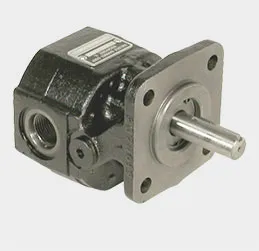aluminium hpdc casting
The Role of Aluminium in High-Pressure Die Casting
Aluminium high-pressure die casting (HPDC) is a manufacturing process that is widely utilized in various industries due to its exceptional properties and benefits. This method involves forcing molten aluminium into a mold under high pressure, allowing for the production of complex geometries with excellent surface finishes and dimensional accuracy. The following explores the advantages, applications, and innovations within the realm of aluminium HPDC.
Advantages of Aluminium in HPDC
Aluminium is a preferred material for HPDC for several reasons. Firstly, its lightweight nature makes it ideal for applications in automotive, aerospace, and consumer goods where reducing weight without sacrificing strength is crucial. This characteristic can lead to increased fuel efficiency in vehicles and enhanced performance in aerospace components.
Secondly, aluminium exhibits excellent corrosion resistance. This property is critical for components exposed to harsh environments, such as automotive parts or outdoor equipment. The inherent resistance to rust, along with the ability to form a protective oxide layer, prolongs the lifespan of the finished products, ensuring durability and reliability over time.
Additionally, aluminium has good thermal and electrical conductivity, which makes it suitable for various applications, including heat exchangers and electrical enclosures. The ability to dissipate heat efficiently enhances performance in automotive engines and electronic devices, helping to prevent overheating and other related issues.
Applications of Aluminium HPDC
The applications of aluminium high-pressure die casting are vast and diverse. In the automotive industry, manufacturers use HPDC to produce components such as engine blocks, transmission housings, and structural parts. These components benefit from the strength-to-weight ratio of aluminium, contributing to overall vehicle performance and efficiency.
In the aerospace sector, aluminium HPDC enables the creation of critical components that require both lightweight design and high strength. Parts such as brackets, housings, and structural elements produced through this process are essential for achieving optimal aircraft performance while ensuring safety and sustainability.
aluminium hpdc casting

Moreover, the electronics industry has also embraced aluminium HPDC for manufacturing housings and components for mobile devices, computers, and other electronic equipment. The aesthetic appeal of aluminium, combined with its functionality, makes it a popular choice for consumer products.
Innovations in Aluminium HPDC
Recent advancements in technology have further enhanced the capabilities of aluminium HPDC. Innovations such as improved die designs, enhanced alloy formulations, and state-of-the-art melting and pouring techniques have enabled manufacturers to achieve higher precision and efficiency.
The introduction of automated machinery and robotic systems into the HPDC process has also increased production rates and consistency. These technologies reduce human error and allow for greater flexibility, making it possible to respond swiftly to market demands and customization requests.
Additionally, the development of new aluminium alloys specifically designed for HPDC has led to improved mechanical properties and reduced porosity in castings. These innovations not only enhance the performance of the finished products but also minimize wastage during the manufacturing process, contributing to sustainable production practices.
Challenges and Future Outlook
Despite its many advantages, aluminium HPDC also faces challenges. Issues such as die wear, thermal management, and the handling of recycling aluminium remain areas of focus for manufacturers. Addressing these challenges is crucial for maximizing the potential of aluminium HPDC.
Looking ahead, the future of aluminium high-pressure die casting appears promising. As industries continue to prioritize lightweight materials and sustainability, the demand for aluminium cast components is likely to increase. Research into new alloys, recycling practices, and process improvements will further enhance the appeal of aluminium HPDC, solidifying its role as a vital manufacturing method across multiple sectors.
In conclusion, aluminium high-pressure die casting is a key player in modern manufacturing, combining lightweight strength with versatility and efficiency. Its applications in automotive, aerospace, and electronics underscore its importance, while ongoing innovations promise to enhance its capabilities further. As the industry evolves, aluminium HPDC will undoubtedly continue to shape the future of manufacturing, meeting the needs of a dynamic and demanding market.
-
Precision Sheet Metal Stamping Manufacturer | Fast & ReliableNewsAug.01,2025
-
OEM Sand Cast Pump Valve Fittings - Baoding Hairun Machinery And Equipment Trading Co., Ltd.NewsAug.01,2025
-
Custom OEM Impellers | High Efficiency & PrecisionNewsAug.01,2025
-
OEM Sand Cast Pump Valve Fittings - Baoding Hairun Machinery | Customization, Quality AssuranceNewsAug.01,2025
-
OEM Sand Cast Pump Valve Fittings - Baoding Hairun Machinery And Equipment Trading Co., Ltd.NewsAug.01,2025
-
OEM Sand Cast Pump Valve Fittings - Baoding Hairun Machinery And Equipment Trading Co., Ltd.NewsJul.31,2025















